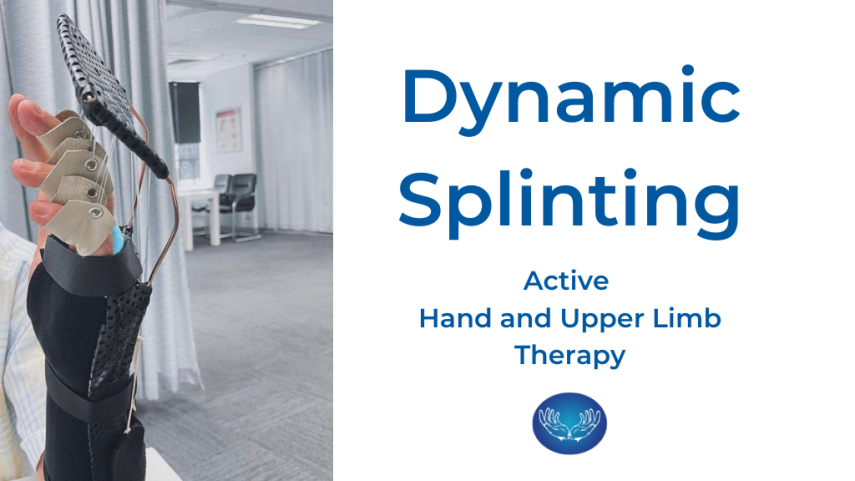Dynamic Splinting: Some FAQ's
5 June 2024
At Active Hand and Upper Limb Therapy, we can help you regain range of motion through Dynamic Splinting.
Whilst a quick manual stretch is helpful, it is often not well maintained. Studies show that a prolonged stretch under low load is painful and creates more permanent change.
Dynamic splinting compliments therapy completed in clinic by allowing you to make significant gains from home.
What is Dynamic Splinting?
A dynamic splint uses a tension spring to place a constant pull on tight or healing tissue.
Unlike static splints, which are rigid and immobilise the affected area, dynamic splints are designed to provide adjustable movement to the joint whilst still providing support
Dynamic splints typically consist of adjustable components, such as springs or elastic bands, which allow for controlled stretching or movement of the joint. These splints are custom-made to fit the specific anatomy of our patients and the requirements of their condition
When do we use Dynamic Splints?
Joint Contractures
- Contractures occur when muscles, tendons, or other soft tissues become shortened and tight, limiting the range of motion of a joint. Dynamic splints can help stretch and lengthen these tissues gradually over time, reducing contracture severity and improving joint mobility
Joint Stiffness
- Dynamic splints can be used to address joint stiffness caused by conditions such as arthritis, post-surgical stiffness, or immobilization. By providing controlled movement to the affected joint, dynamic splints help maintain or improve flexibility and prevent further stiffness
Muscle Weakness
- In cases of muscle weakness due to conditions like stroke, spinal cord injury, or neuromuscular disorders, dynamic splints can assist in providing support and facilitating movement. They can help compensate for weak muscles and promote more efficient use of remaining muscle function
Burns
- In burn rehabilitation, dynamic splints can help prevent scar contractures and maintain skin and joint mobility during the healing process
How often do you wear a Dynamic Splint?
Studies show that Dynamic Splints need to be worn for a minimum of 6 hours per day. This is typically broken into 30-60 minute sessions throughout the day as tolerated by the patient.
In saying this, each case is different - our therapists will provide you with clear instructions regarding wear of your splint that is tailored to your specific needs.
How long does it take to see results?
The time it takes to see results with dynamic splinting varies depending on the severity of the condition, the individual's adherence to the treatment plan, and other factors. Improvement in range of motion, muscle strength, and functional abilities are often observed within weeks!
If you would like any further information, please contact our friendly team on 07 5526 4066 or admin@activehandtherapy.com.au

